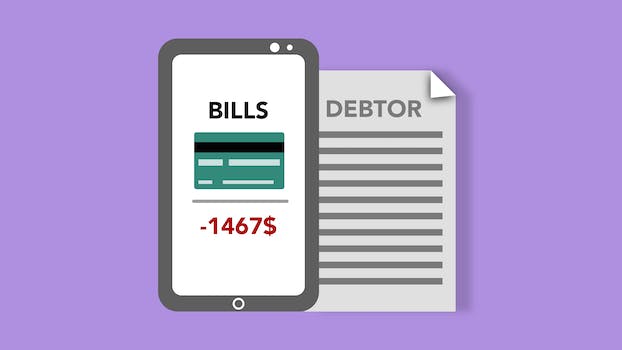How To Make $1 Million
Introduction

Making $1 million is a significant financial goal for many people. While it may seem daunting, there are various ways to achieve this milestone. In this article, we will explore some strategies and tips on how to make $1 million.
Investing Strategies for Reaching $1 Million
Making a million dollars is a dream for many people. It’s a significant milestone that can provide financial security and freedom. However, it’s not an easy feat to achieve. It requires discipline, patience, and a solid investment strategy. In this article, we’ll explore some investing strategies that can help you reach your goal of making $1 million.
The first step in reaching your goal is to start investing early. The earlier you start, the more time your money has to grow. Compound interest is a powerful tool that can help you reach your goal faster. By reinvesting your earnings, you can earn interest on your interest, which can significantly increase your returns over time.
Another important strategy is to diversify your portfolio. Investing in a variety of assets can help reduce your risk and increase your potential returns. A well-diversified portfolio should include a mix of stocks, bonds, and other assets such as real estate or commodities. It’s important to regularly review and rebalance your portfolio to ensure that it remains diversified and aligned with your investment goals.
One popular investment strategy for reaching $1 million is to invest in stocks. Stocks have historically provided higher returns than other asset classes over the long term. However, they also come with higher risk. It’s important to do your research and invest in companies with strong fundamentals and a track record of success. You should also consider investing in a mix of large-cap, mid-cap, and small-cap stocks to diversify your portfolio.
Another strategy is to invest in real estate. Real estate can provide a steady stream of income through rental properties or appreciation in value over time. However, it also requires a significant upfront investment and ongoing maintenance costs. It’s important to do your research and invest in properties that are in high-demand areas and have the potential for long-term growth.
Investing in mutual funds or exchange-traded funds (ETFs) is another popular strategy for reaching $1 million. These funds allow you to invest in a diversified portfolio of stocks or bonds with a single investment. They also provide professional management and lower fees than actively managed funds. It’s important to choose funds that align with your investment goals and risk tolerance.
Finally, it’s important to have a long-term investment horizon. Investing for the long-term allows you to ride out market fluctuations and take advantage of compound interest. It’s important to avoid making emotional decisions based on short-term market movements. Instead, focus on your long-term goals and stick to your investment strategy.
In conclusion, reaching $1 million requires discipline, patience, and a solid investment strategy. Starting early, diversifying your portfolio, and investing in stocks, real estate, mutual funds, or ETFs are all strategies that can help you reach your goal. It’s important to have a long-term investment horizon and avoid making emotional decisions based on short-term market movements. With the right strategy and mindset, you can achieve your goal of making $1 million.
Starting a Successful Business: Tips for Hitting the $1 Million Mark
Making a million dollars is a dream for many people. It’s a significant milestone that represents financial freedom and success. However, achieving this goal is easier said than done. Starting a successful business is one of the most reliable ways to hit the $1 million mark. But how do you do it? Here are some tips to help you get started.
Firstly, you need to have a solid business idea. Your idea should solve a problem or meet a need in the market. It should be unique and innovative, something that sets you apart from your competitors. Conduct market research to determine the viability of your idea. Identify your target audience and understand their needs and preferences. This will help you tailor your product or service to meet their expectations.
Once you have a solid business idea, you need to create a business plan. A business plan is a roadmap that outlines your goals, strategies, and tactics for achieving success. It should include a detailed analysis of your market, competition, and financial projections. Your business plan should also outline your marketing and sales strategies, as well as your operational and management plans.
Next, you need to secure funding for your business. Starting a business requires capital, and you need to have enough money to cover your startup costs and operating expenses. You can fund your business through personal savings, loans, or investors. If you’re seeking investors, you need to have a compelling pitch that showcases your business idea and its potential for growth and profitability.
Once you have secured funding, you need to focus on building your brand and marketing your business. Your brand is your identity, and it should reflect your values, mission, and vision. Your marketing strategy should be tailored to your target audience and should include a mix of online and offline marketing channels. Social media, email marketing, and content marketing are some of the most effective ways to reach your audience and build your brand.
As your business grows, you need to focus on scaling your operations and expanding your reach. This requires a solid management and operational plan. You need to hire the right people, delegate tasks, and streamline your processes to ensure efficiency and productivity. You also need to stay up-to-date with industry trends and innovations to stay ahead of your competition.
Finally, you need to stay focused and committed to your goals. Starting a business is not easy, and it requires hard work, dedication, and perseverance. You need to be willing to take risks, learn from your mistakes, and adapt to changing market conditions. You also need to have a clear vision of your goals and a plan for achieving them.
In conclusion, starting a successful business is one of the most reliable ways to hit the $1 million mark. It requires a solid business idea, a detailed business plan, funding, branding, marketing, scaling, and commitment. If you’re willing to put in the work and stay focused on your goals, you can achieve financial freedom and success. Remember, the journey to a million dollars starts with a single step.
Maximizing Your Earnings: High-Paying Careers That Can Lead to $1 Million
Making $1 million is a dream for many people. It is a significant milestone that can provide financial security and freedom. While there are many ways to make money, some careers offer higher earning potential than others. In this article, we will explore some high-paying careers that can lead to $1 million.
One of the most lucrative careers is in the medical field. Doctors, surgeons, and dentists are among the highest-paid professionals in the world. According to the Bureau of Labor Statistics, the median annual salary for physicians and surgeons is $208,000. However, some specialties, such as orthopedics and cardiology, can earn over $400,000 per year. Dentists can also earn a high income, with a median annual salary of $159,200.
Another high-paying career is in finance. Investment bankers, hedge fund managers, and private equity professionals can earn millions of dollars per year. However, these careers require a high level of education and experience. Investment bankers, for example, typically have a degree in finance or economics and work long hours. The median annual salary for investment bankers is $100,000, but top earners can make over $1 million per year.
Technology is another industry that offers high-paying careers. Software engineers, data scientists, and cybersecurity professionals are in high demand and can earn six-figure salaries. According to Glassdoor, the median annual salary for software engineers is $105,000, while data scientists can earn up to $150,000 per year. Cybersecurity professionals can also earn a high income, with a median annual salary of $99,730.
Entrepreneurship is another way to make $1 million. Starting a successful business can provide significant financial rewards. However, entrepreneurship is not for everyone. It requires a high level of risk-taking, hard work, and dedication. According to Forbes, the average net worth of a billionaire entrepreneur is $3.8 billion. While not everyone can become a billionaire, starting a successful business can still lead to a high income.
Real estate is another industry that offers high earning potential. Real estate agents, brokers, and developers can earn a significant income. According to the National Association of Realtors, the median annual income for real estate agents is $49,700. However, top earners can make over $1 million per year. Real estate developers can also earn a high income, with some earning millions of dollars per year.
In conclusion, there are many high-paying careers that can lead to $1 million. The medical field, finance, technology, entrepreneurship, and real estate are just a few examples. However, it is important to note that these careers require a high level of education, experience, and hard work. While making $1 million is a significant milestone, it should not be the sole focus of one’s career. It is important to find a career that is fulfilling and aligns with one’s values and interests.
Saving Your Way to $1 Million: Practical Tips for Building Wealth
Making a million dollars is a dream for many people. It may seem like an unattainable goal, but with the right mindset and strategies, it is possible to achieve. One of the most effective ways to reach this financial milestone is by saving your way to $1 million. Here are some practical tips for building wealth through saving.
Firstly, it is important to set a realistic goal. Saving a million dollars may seem daunting, but breaking it down into smaller, achievable goals can make it more manageable. Start by setting a monthly savings target and gradually increase it over time. This will help you stay motivated and on track towards your ultimate goal.
Another key strategy is to live below your means. This means spending less than you earn and avoiding unnecessary expenses. It may require some sacrifices, such as cutting back on dining out or buying new clothes, but it will pay off in the long run. By living frugally, you can save more money and invest it towards your financial goals.
One of the most effective ways to save money is by creating a budget. This involves tracking your income and expenses and allocating your money towards different categories, such as housing, transportation, and entertainment. By having a clear understanding of where your money is going, you can identify areas where you can cut back and save more.
Another important aspect of saving is investing. Putting your money into stocks, bonds, or real estate can help it grow over time. However, it is important to do your research and seek professional advice before making any investment decisions. Diversifying your portfolio can also help minimize risk and maximize returns.
In addition to investing, it is important to have an emergency fund. This is a separate savings account that is used to cover unexpected expenses, such as medical bills or car repairs. Having an emergency fund can help you avoid going into debt and keep you on track towards your financial goals.
Another way to save money is by taking advantage of discounts and deals. This can include using coupons, shopping during sales, or negotiating prices. By being a savvy shopper, you can save money on everyday expenses and put it towards your savings goals.
Finally, it is important to stay motivated and disciplined. Saving money requires patience and perseverance, but the rewards are worth it. Keep reminding yourself of your ultimate goal and celebrate small milestones along the way. Surround yourself with supportive people who share your financial goals and can offer encouragement and advice.
In conclusion, saving your way to $1 million is a practical and achievable goal. By setting realistic targets, living below your means, creating a budget, investing, having an emergency fund, taking advantage of discounts, and staying motivated, you can build wealth over time. Remember, it is never too late to start saving and investing towards your financial future.
The Power of Passive Income: How to Generate $1 Million Over Time
Making a million dollars is a dream for many people. It’s a significant milestone that can provide financial security and freedom. However, it’s not an easy feat to achieve. It requires hard work, dedication, and a solid plan. One of the most effective ways to generate a million dollars over time is through passive income.
Passive income is money earned without actively working for it. It’s the opposite of active income, which is earned through a job or business. Passive income streams can come from various sources, such as rental properties, investments, royalties, and online businesses. The beauty of passive income is that it can continue to generate money even when you’re not actively working.
To generate a million dollars through passive income, you need to have a long-term mindset. It’s not a get-rich-quick scheme, but rather a slow and steady process. The key is to start early and be consistent. Here are some tips on how to generate passive income and reach your million-dollar goal.
Invest in Real Estate
Real estate is one of the most popular ways to generate passive income. You can buy rental properties and earn rental income every month. The key is to find properties in high-demand areas with low vacancy rates. You can also invest in real estate investment trusts (REITs), which are companies that own and manage income-generating properties. REITs offer a way to invest in real estate without the hassle of managing properties yourself.
Invest in Stocks and Bonds
Investing in stocks and bonds is another way to generate passive income. You can buy dividend-paying stocks and earn regular income from the dividends. Bonds also offer a steady stream of income through interest payments. The key is to diversify your portfolio and invest in a mix of stocks and bonds to reduce risk.
Create Digital Products
In today’s digital age, creating digital products is a lucrative way to generate passive income. You can create e-books, online courses, software, and other digital products and sell them online. Once you create the product, you can continue to earn money from it without any additional work. The key is to create high-quality products that provide value to your customers.
Start a Blog or YouTube Channel
Blogging and vlogging are popular ways to generate passive income. You can create a blog or YouTube channel on a topic you’re passionate about and earn money through advertising, sponsorships, and affiliate marketing. The key is to create high-quality content that attracts a loyal audience.
Create a Mobile App
Creating a mobile app is another way to generate passive income. You can create an app that solves a problem or provides entertainment and earn money through in-app purchases and advertising. The key is to create an app that is user-friendly and provides value to your users.
In conclusion, generating a million dollars through passive income is possible, but it requires patience, dedication, and a solid plan. The key is to start early and be consistent. Invest in real estate, stocks, and bonds, create digital products, start a blog or YouTube channel, or create a mobile app. The possibilities are endless, but the key is to find a passive income stream that works for you and stick with it. With time and effort, you can reach your million-dollar goal and achieve financial freedom.
Conclusion
Conclusion: Making $1 million requires a combination of hard work, dedication, and smart financial decisions. It is important to set clear financial goals, create a budget, invest wisely, and continuously educate oneself on personal finance. Building a successful business or career, as well as saving and investing consistently, can also contribute to achieving this financial milestone. However, it is important to remember that making $1 million is not the only measure of success and that financial stability and happiness can be achieved at any income level.





